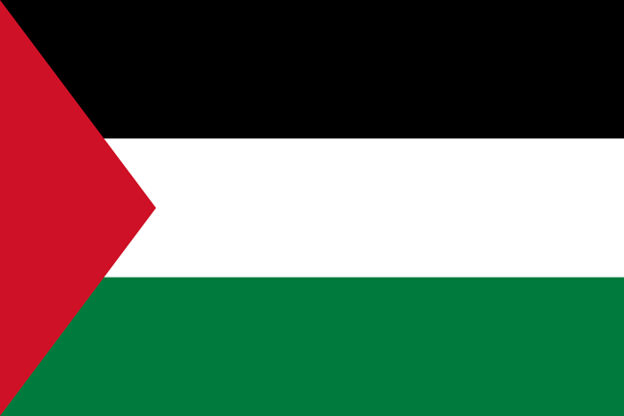An “All Party Parliamentary” group has released a gripping report on the October 7 terrorist attack in Israel. All-Party Parliamentary Groups are informal groups of Members of both Houses of the British Parliament. The following is a very brief summary.
The Hamas-led attack on Southern Israel on 7 October 2023 was one of the largest terror attacks in history, resulting in 1,182 fatalities and over 4,000 wounded. A total of 251 hostages were taken – 210 were alive and 41 were dead bodies. It was the largest single massacre of Jewish people since the Holocaust and the deadliest per capita terrorist attack, with just over 1 in every 10,000 Israelis killed and the third overall deadliest terrorist attack in the world to date.
The attack resulted in over 4,000 wounded individuals treated at hospitals, with gunshot wounds, grenade injuries, and burns. Trauma centres faced overwhelming numbers of severe cases, treating patients whilst under ongoing rocket fire. The mental health repercussions since 7 October, including PTSD and suicides, have led experts to classify the event as a mass trauma affecting Israeli society.
A total of 863 civilians were killed on 7 October, accounting for 73% of the dead. The remaining 27% of fatalities were those serving in active duty – either in the military or as first responders. Women and children account for 27% of those killed during the attacks and 49% of hostages taken alive – 316 and 102 respectively. The youngest victim of 7 October was just 14 hours old – her mother had been shot whilst driving to the hospital to give birth and a bullet hit the baby girl’s leg whilst in utero. The oldest victim was a 92-year-old Holocaust survivor, who was killed at Kibbutz Holit.
The victims were killed through shootings, asphyxiation and burning, grenade explosions, RGP and missile attacks. Many victims were subjected to mutilation, sexual violence, and other forms of deliberate brutality before or after death. Forensic teams faced immense challenges in identifying remains due to the extent of desecration to bodies, with some victims identified months later through fragments like teeth.
Hamas orchestrated and led the attack, with 3,800 of its elite Nukhba forces and members of Izz al-Din al-Qassam Brigades invading Southern Israel. They were supported by 2,200 individuals from other armed groups, including Palestinian Islamic Jihad and civilians from Gaza. A further 1,000 individuals stayed in Gaza to operate rocket launchers and provide tactical support.
Hamas maintained strict secrecy regarding the 7 October attack, with the operation details withheld from most of its fighters until hours before its execution. Only a small group of senior leaders, including Yahya Sinwar, the leader of Hamas in the Gaza Strip, and Mohammed Deif, the head of Qassam Brigades, were fully aware of the plan. Lower-ranking commanders and participants were informed of their roles just days, or even hours, in advance.
When the militants crossed the border, they came armed with advanced RPGs, drones, small arms, and explosives, including thermobaric weapons. The sheer volume of arms was designed to cause maximum destruction. Weapons such as the strip-and-frame charge explosive were specifically created for the attack. The explosive frame was designed to breach the border and to be affixed to home saferoom doors in Israeli border communities, to break in.
The perpetrators documented their actions on the day, through GoPro body cameras and mobile phones. They livestreamed and recorded their actions, uploading them to social media sites like Telegram.
The Hamas-led attack began with an unprecedented barrage of rockets, aimed at southern Israel and the larger metropolises across the country. This was followed by 119 breaches in the border fence between the Gaza Strip and Israel over the course of the attack, and simultaneous incursions by air and sea.
Once the border had been penetrated, the attacking forces breached community defences and caused widespread destruction. Kibbutzim such as Be’eri, Kfar Aza, and Nir Oz were the worst affected. Be’eri and Kfar Aza experienced the highest death tolls, with 99 and 62 civilians killed respectively. Nir Oz saw the most kidnappings, with 75 people taken hostage, alongside 7 abducted bodies. The communities were attacked by Hamas, other armed groups, and Gazan civilians. They destroyed homes, committed atrocities, systematically looted, and set fire to properties. Fierce battles ensued at some locations, with some areas only reclaimed by Israeli forces on the evening of 7 October and others remained contested for days. By 11 October, 89% of the communities in the Gaza envelope had been evacuated, displacing tens of thousands of people.
Hamas-led forces also launched coordinated attacks on three cities in the western Negev: Sderot, Ofakim, and Netivot, which resulted in 88 fatalities.
The Nova Music Festival, held near Kibbutz Re’im, became the deadliest site of the attacks, with over 370 people killed, most of them young attendees under 30.
The death toll made the attack on the festival “the deadliest concert attack in history.”
Illustration: Pixabay
